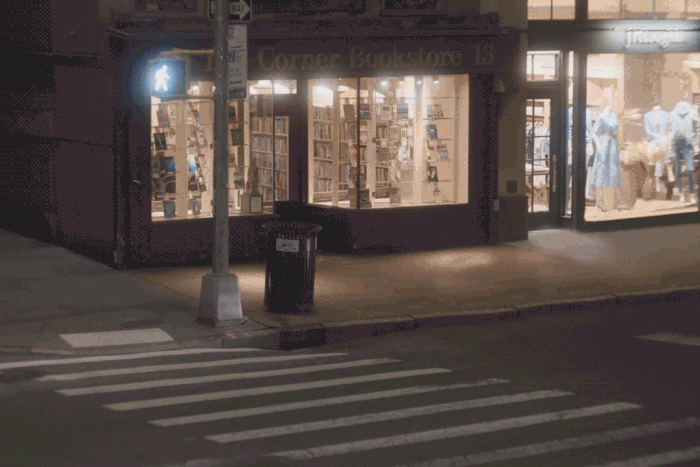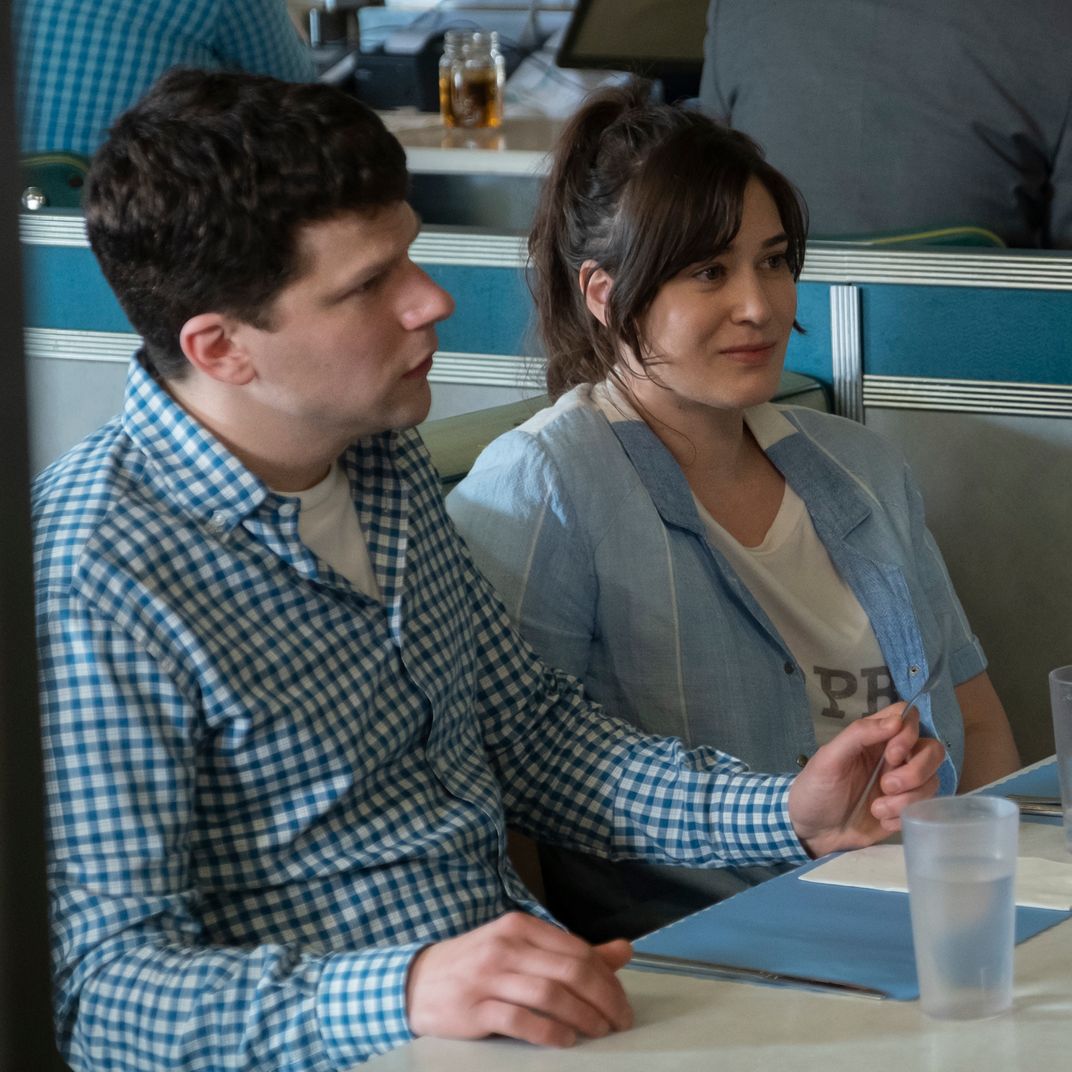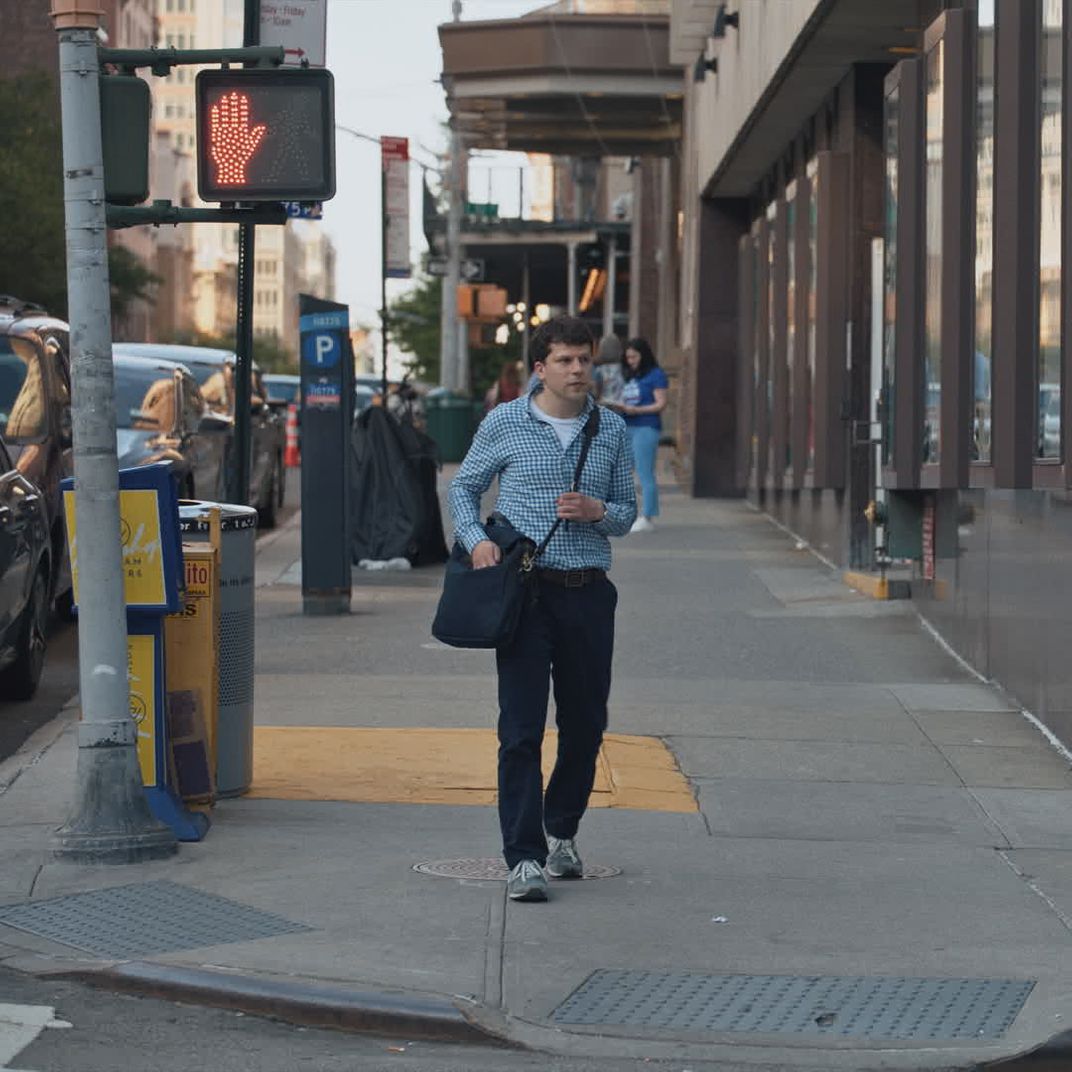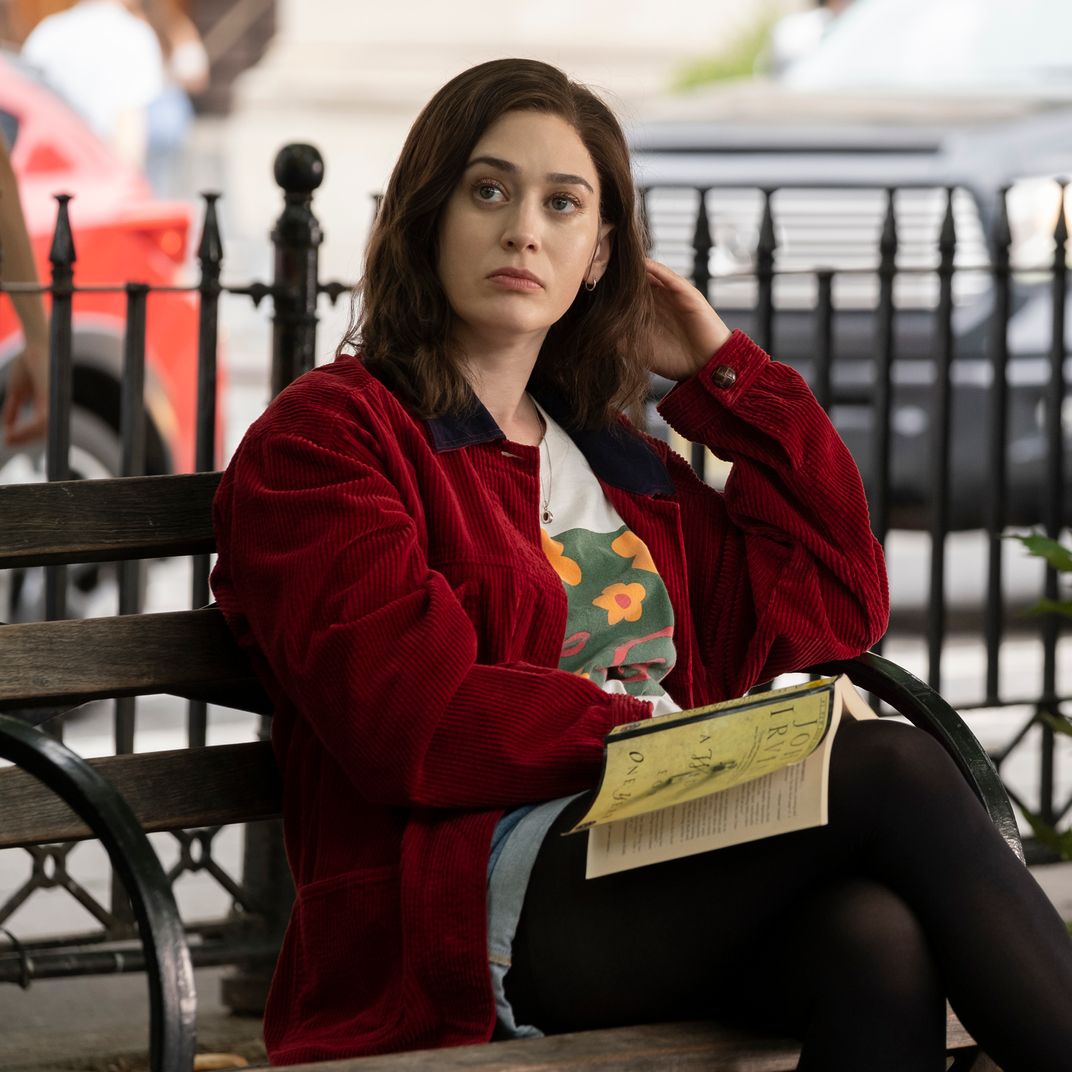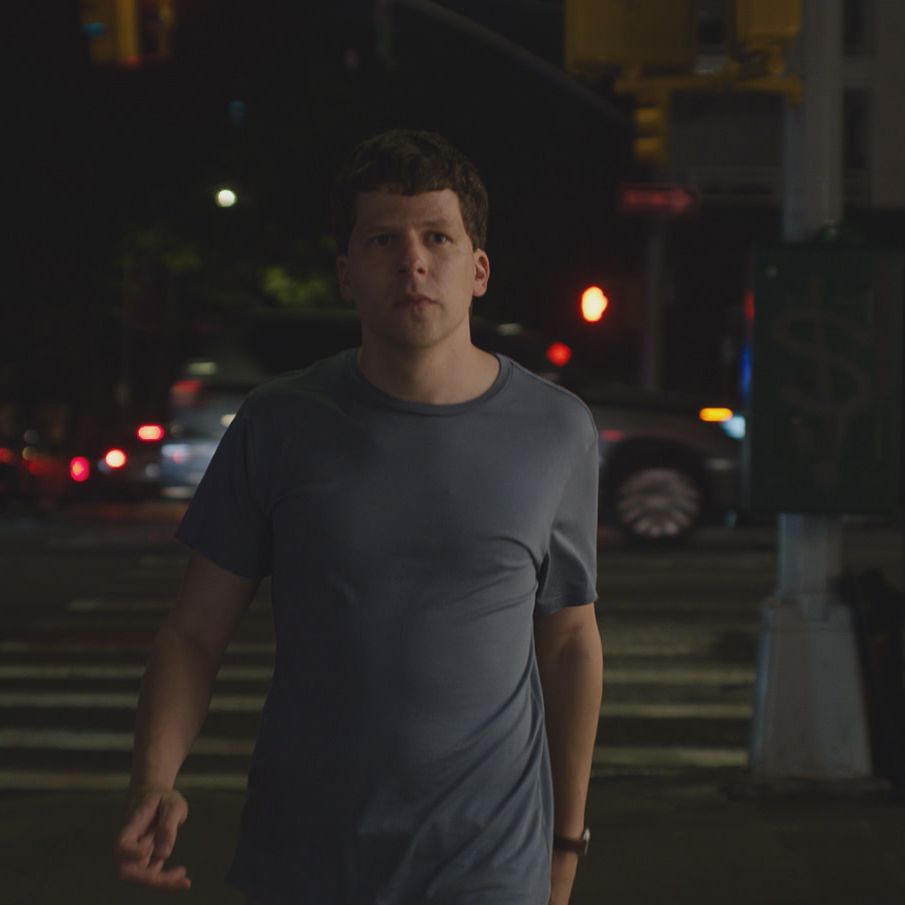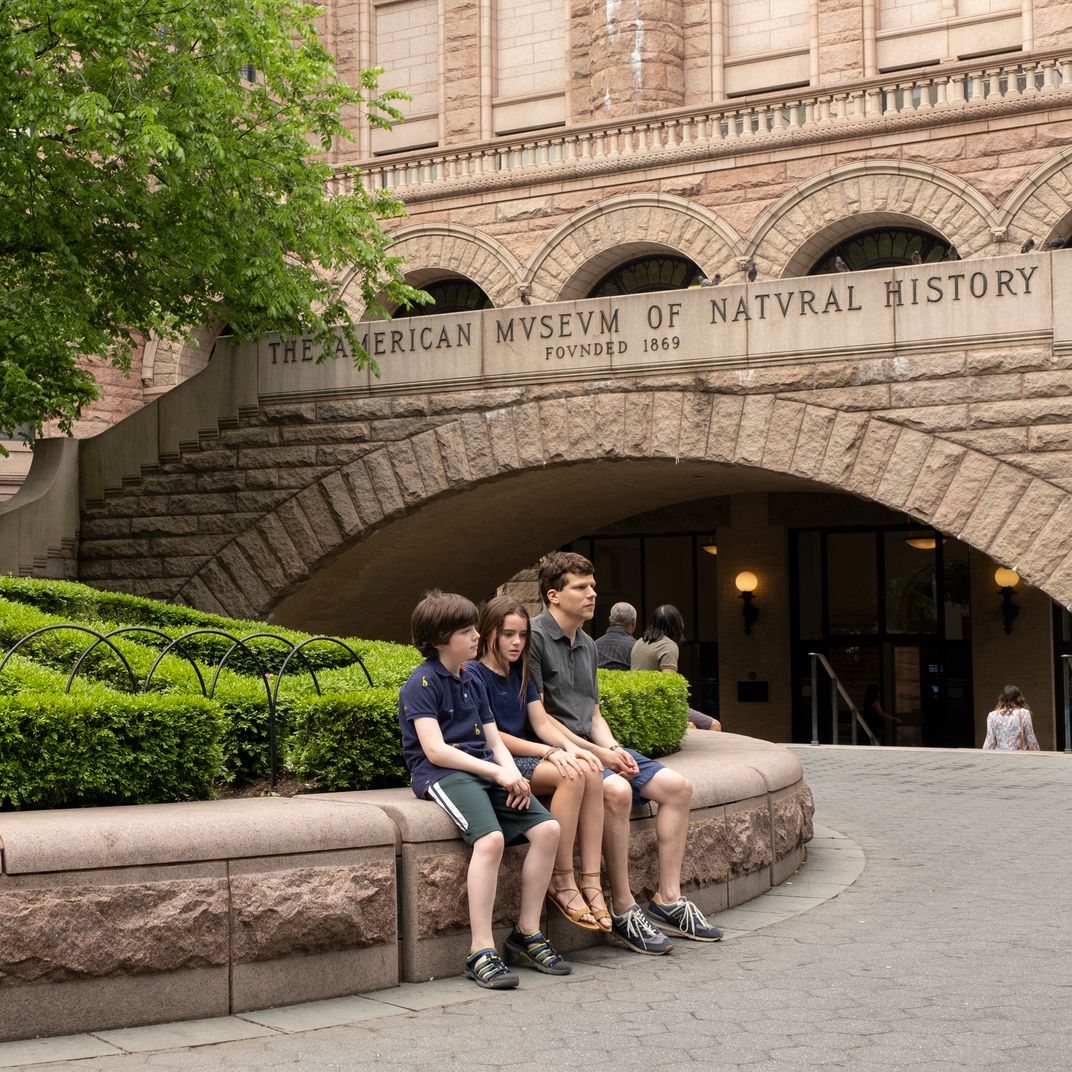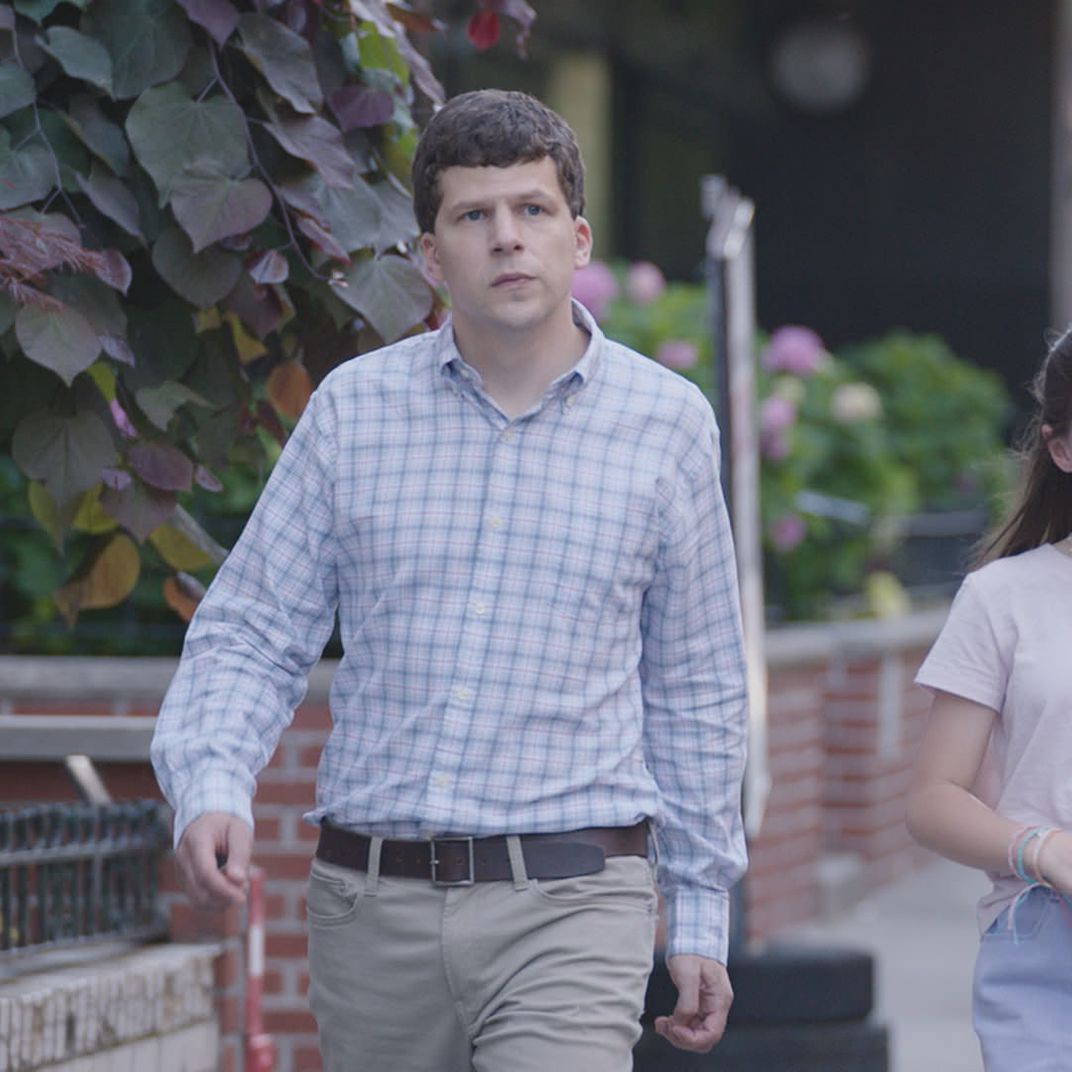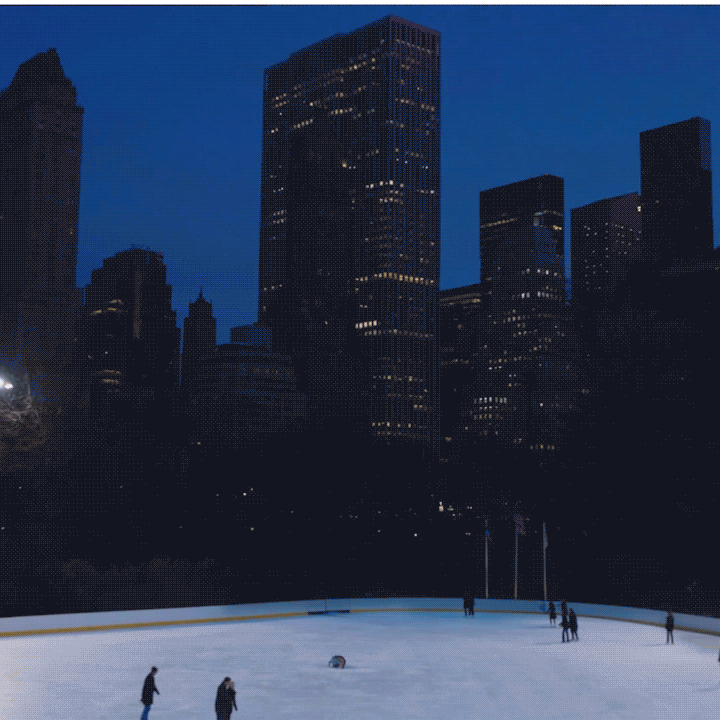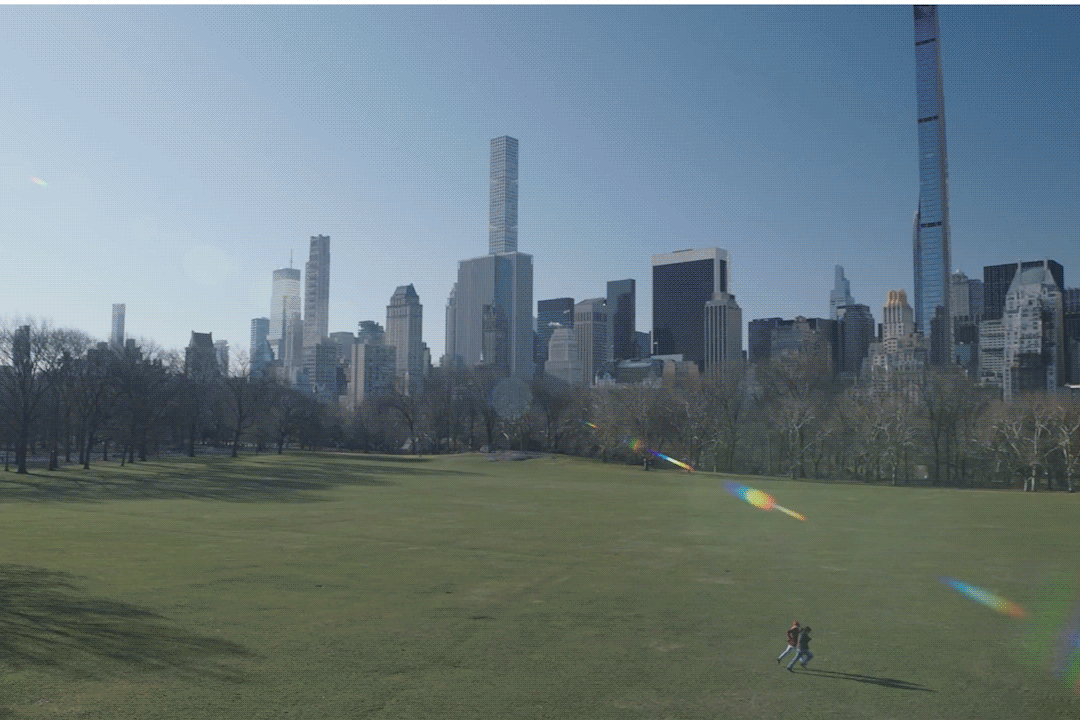
The decision to set Fleishman Is in Trouble, the limited-series adaptation of my novel, in 2016 — the year I wrote it — came from necessity, both practical and creative. The Fleishman of the title is a doctor, and to inject COVID into his story would affect nearly every aspect of the plot. Plus, the pandemic was very much still playing out. Plus, the Trump presidency would have affected the story line too much. Plus, I could not bear it.
It was my first time out in TV, and I didn’t quite understand that setting something outside the calendar year in which you’re shooting isn’t a small detail; no, it makes the thing a period piece. And, in fact, 2016 is a more difficult period to shoot in many ways than, say, New York’s Gilded Age or the 1970s. For those eras, you go to a costume rental shop and you decorate sets with the specialty accoutrement that those houses exist for. For 2016 — so recent, and yet — it’s murkier and therefore harder: harder for a costume designer to find jeans from 2016 for 300 background players than it would be to get corsets and bloomers and bell-bottoms for them (though she did); harder for our production designer and set decorators to find objects from that recently (though they did); hardest for a locations manager most of all to shoot a city that’s been ravaged by a pandemic and altered by some slight sense of progress (though he absolutely, resoundingly did).
But still, despite all this planning, there were challenges. An electric bus that didn’t exist in New York six years ago drove through a shot outside the Corner Bookstore on Madison; we high-fived over the marked production value until we were in the editing room and realized the problem. We shot in Central Park, glorious panoramic shots that were now pockmarked with those skinny, silly galaxy-scrapers that went up over the last few years — the ones where you’re always hearing about swaying apartments and stuck elevators. We had to remove them in special effects. Those amazing dining huts that people are always fighting over because they want their parking spots back helped keep our characters on side streets instead of avenues. Masked people zinged like bogeys across the camera no matter how meticulous our locations department was. We angled cameras away from “Biden 2020” bumper stickers. We VFX-ed over video billboards and TVs that contained things that weren’t a thing in 2016, like the McPlant Burger at McDonald’s or Marjorie Taylor Greene. It was tedious and exhausting. My secret — and with apologies to our excellent locations people, who might have suspected this all along — is that I didn’t care.
A month before we began prep for shooting, I had moved back to New York after doing a hard dime in Los Angeles followed by seven unhappy years in New Jersey. I was born and raised here, but you get married, and you go where your work is, and you begin to wonder if life is not so short as they say but actually quite long, and I looked up to find that I’d been away from the only place that ever made sense to me for almost 20 years. As an adult, I’d lived for a couple of years on the Lower East Side, at Clinton and Grand. That’s when I met my husband and moved to Los Angeles. Before that, I’d lived on the Upper East Side, at 89th and Third, and before that in my NYU dorm on Union Square West. By the time I returned, New York had been through the VC revolution, a pandemic, a housing crash, but still, so many of the places I’d spent my early adulthood in were still there. And those places were the places in the book — a book I wrote partially out of my longing for my home — and then they were in scripts for the show, and then they were in the show.
Something about shooting a TV show on my return felt like making up for lost time. To meet New York again while making a TV show was the equivalent of showing up at an ex’s doorstep with three-dozen roses and a totally legitimate explanation. Baby, I missed you. Baby, I never wanted to leave. Baby, she didn’t mean a thing.
But, baby, I don’t know how to tell you this, but you’ve changed. I’d ask our locations manager about any number of locations that I’d had in mind when I wrote the book. Some of them were just gone. The Comfort Diner on 86th Street had been replaced by an H&M (which clearly made Orva, the shoe store across the street, obsolete). The Raccoon Lodge on Amsterdam somehow had become a JG Melon that became Barnacho that has since been replaced by something called Taco Tavern. Tony’s Di Napoli, an Italian restaurant that served a family-style baked ziti that could feed you for a week, had moved from Second Avenue and 83rd Street to Third Avenue and 64th Street. A bigger location with both a large patio and a subterranean level, sure, but what exactly, emotionally speaking, is Third and 64th?
I was young when I left. A few days ago, I turned 47. I’m not that old, but the only metric that could still allow me to be called young is if I died right now, they would say I died young. I mention this because, somehow, I became old enough to acquire the single worst older New Yorker’s quality, which is to constantly point out what used to be somewhere.
My parents used to do this to me. I was born in NYU faculty housing. My father taught in the computer department and my mother had just graduated from the School of Commerce, Arts and Finance (now the Stern Business School). They would visit me when I was in school there and take me to eat in restaurants that, they explained, used to be other restaurants; they would visit my dorm, which used to be a parking lot. My father would walk me past the Angelika, which was right across from where we’d once lived. He would reminisce about the playground, gone by then, where he’d bring my sister Tracy and me. He looked with disdain at the sweet little analog Coles Sports and Recreation Center, where my college boyfriend and I played racquetball and once even took a swing-dancing lesson. To him, it was a 1980s blight on what was once a beautiful block. (There was also a secret parking spot on Houston; a curb cut for what had once been a driveway and no longer was but still seemed like you couldn’t park there; you could. It’s gone now, the curb cut filled in, which is the only reason I’m putting this into print.) We’d pass the Limelight, which had been a church and was now a dance club. The Barnes & Noble* at the top of Union Square, where I spent evenings on the floor of the “Diet and Fitness” section — the diet-and-fitness section in any bookstore is a home away from home for me — was once the old, empty Century building, and what a shame to have a bookstore and not an empty carcass there. Don’t get him started on the Lower East Side. The mediocre Noah’s Ark Deli had replaced the beloved glatt kosher Chinese-Jewish deli mashup, the Grand Deli, which was unacceptable to him. We instead ate at B&H Dairy, which we called the B&H, which still had the same Polish woman in the back boiling pirogen. It comforted my father, how that hadn’t changed. I rolled my eyes through all of it then.
We did okay on the show. We shot in places that I remembered and were still the same: The 92nd Street Y, where, as a child, I saw Mummenschanz in the same auditorium where we’d film a scene of Jake Tapper interviewing Christian Slater. We shot at Dorrian’s Red Hand, where I went on September 12, 2001, to meet with people as we staggered around, trying to make sense of what had just happened. We shot a pivotal scene for the show in Father Demo Square, a block away from the apartment where I’d had my heart broken as a recent college graduate. I went to dinner that night at Jack’s Wife Freda with my friend Tony; it used to be a restaurant called 50 Carmine. We tried to shoot at Tony’s on the Upper East Side, a totally medium Italian restaurant that used to be on Second and 81st and is now on Third and 63rd — but they weren’t having us. We ended up instead at Gene’s downtown, poor terrific stalwart Gene’s, there since 1919, having to make itself into something far less grand. We shot, totally coincidentally, at Temple Shaaray Tefila, where I taught Hebrew school during college. We sat in the pews of the sanctuary and I remembered a Mother’s Day session where we invited the mothers and sang to them. To the tune of “Wonderwall,” we sang, “Immma … I’m singing to you from the biiiiimah. After aaallllll, you’re so wonderful!” I looked at one of the production assistants and said, “This was my life!” She nodded politely and gave another production assistant big eyes and then asked me if I wanted a water.
I finally understand my father’s wistfulness. It wasn’t nostalgia that he was feeling; it was panic. It was — it is — the understanding that you let other people tell you that the previous New York was the best New York, all the time you were actually living in the best New York, and now it’s gone. The world is moving on without me and the least it can do is give me the museum of my youth to sometimes visit. But most of what we cared about is gone now, replaced by something else, and so we spend our time making young people and recent transplants think that they are living in something that is post-golden age, that they just missed it, that they’re a few minutes late. We do this over and over, backward ad infinitum, until Edith Wharton herself steps off a horse-drawn carriage to tell us that New York was only really New York when Tony’s was on Mercer Street and was not an Italian restaurant but an outhouse. God, what a beast nostalgia is. I pass by 89th and Third and I am nostalgic for the podiatrist storefront that is now a Madison Reed in the building where I had that first apartment. He wasn’t even my podiatrist.
But here is the secret of New York: The goldenness of its age is constant. The New York you live in now is the best version of New York. You have to keep out the noise from people like me lest you come to think you missed the whole thing by arriving so late — either by being born or moving here more recently than the person you’re talking to. You didn’t. But I can’t convince you of that. You’ll only understand it when the H&H Bagels, which is not the real H&H Bagels, is turned into a Duane Reade. That day, you will make a shrine of that not-real H&H. You will say to your children that those were the days, when you could go to the second coming of H&H and eat there. And they will roll their eyes. You will be right of course, but so will they. As of right now, there’s a production assistant out there who will pass Temple Shaaray Tefila in 2060 and tell someone that she was on a TV show back during the pandemic there and had to listen to the showrunner drone on about her history at the place. The thing I regret the most is looking at the Coles sports center and seeing it through my father’s eyes as a blight. It wasn’t. It was, I did not yet realize, made of gold.
Like I said, I had a birthday the other day. My friend Reyhan took me to the Angelika to see Tár. Afterward, we walked out on Houston, looking for food, and we passed what I hadn’t noticed was no longer the sweet little analog Coles. It is now a large and glass high-tech building of the future called 181 Mercer Street, I later learned, filled with classrooms, performance spaces, something called a “fly-loft theater,” a quad substitute, and an athletic center. It is a floor wax and a dessert topping. It is a glossy blight on my old block.
“That was where I used to play tennis with my college boyfriend,” I told her as we passed. She nodded politely but she didn’t really care. By now she’s used to the tedium of people who grew up here. She got here in 2014, from Pennsylvania by way of San Francisco and the Hudson Valley. We ended up eating at Jack’s Wife Freda. The server there recognized me from my recent visits and put a candle in a dessert we didn’t order and served it to us. I love it there. I am so happy to be home.
*Pursuant to the way New York changes, dragged around by the economy: I have always wanted to write a joke sequel to You’ve Got Mail. In it, the newly widowed and lovelorn CEO of Barnes & Noble — now a cause for existential concern — begins communicating with an Amazon customer-service bot and falls in love. Please call my agent if this interests you.
_
How Fleishman Turned 2022 Into 2016: A Shot-by-Shot Guide
We couldn’t shoot certain angles at E.J.’s because it’s surrounded by outdoor dining sheds, and we pulled out the Plexiglas panels between the tables. A fun fact about our day at E.J.’s is that our locations manager, Ryan Hammer, wasn’t there because his wife was giving birth to a baby named Emilia Jane (E.J.!).
The Y was rolling out its new 92NY branding this year, but our locations team was able to persuade it to defer the installation of a big mural until we were done. The establishing shot shows the banner out front with the soon-to-be-retired logo.
We set up a Clinton-Kaine canvassing station that Toby would encounter as he leaves the Y en route to work, a nod to that summer of the most fraught election of my (any) lifetime. There was no way to set this in 2016 without acknowledging the end of what is, in retrospect, a naïve time.
A pivotal scene took place on Carmine Street, but there are too many new storefronts and eating huts there. We settled for Father Demo Square, a very short walk away, unchanged in decades. During the same scene, a character follows her younger self around her old haunts, and we see her stop at the IFC Center, where her young avatar buys a ticket at its predecessor, the Waverly Theater. We had to angle our shots up rather than down Sixth Avenue to avoid the changing array of World Trade Center towers.
Toby’s building isn’t at a real address. We shot at 201 East 66th Street. Across Third Avenue was a yoga-clothing store called Alo, and it didn’t open this location until 2020, so we had to scrub it out in postproduction.
Eternal bars make for easy time-shifting, because they’re iconic and unchanging. Pete’s Tavern is an old stalwart of magazine writers — particularly men’s magazine writers — so we chose it for a book-launch party scene. Same for Dorrian’s Red Hand, a stalwart of the budding finance bro on the Upper East Side.
We had Toby enter and exit the American Museum of Natural History on the fountain side because we figured that he’d be a member, and that’s the members’ entrance. But the real reason we did it, even though we very much wanted the front of the museum, was that the statue of Teddy Roosevelt on the Central Park West side was being removed even as we were arranging the shoot.
We couldn’t do anything on major avenues, for the most part, because of the pandemic shutdown of storefronts (and turnover), COVID signage, and testing tents on every corner. There were far fewer Citi Bike docks in 2016, too. We dodged masked people, throngs of late-model Teslas. It’s a shame, because the Upper East Side should have been an easy place to shoot for another time, thanks to the comparative lack of bike lanes and complete streets.
Toby proposes at Wollman Rink in an early-aughts flashback, forcing the production to remove Ukraine blue-and-gold illumination from the tops of buildings in the nighttime shot.
We couldn’t shoot certain angles at E.J.’s because it’s surrounded by outdoor dining sheds, and we pulled out the Plexiglas panels between the tables. A fun fact about our day at E.J.’s is that our locations manager, Ryan Hammer, wasn’t there because his wife was giving birth to a baby named Emilia Jane (E.J.!).
The Y was rolling out its new 92NY branding this year, but our locations team was able to persuade it to defer the installation of a big mural until we were done. The establishing shot shows the banner out front with the soon-to-be-retired logo.
We set up a Clinton-Kaine canvassing station that Toby would encounter as he leaves the Y en route to work, a nod to that summer of the most fraught election of my (any) lifetime. There was no way to set this in 2016 without acknowledging the end of what is, in retrospect, a naïve time.
A pivotal scene took place on Carmine Street, but there are too many new storefronts and eating huts there. We settled for Father Demo Square, a very short walk away, unchanged in decades. During the same scene, a character follows her younger self around her old haunts, and we see her stop at the IFC Center, where her young avatar buys a ticket at its predecessor, the Waverly Theater. We had to angle our shots up rather than down Sixth Avenue to avoid the changing array of World Trade Center towers.
Toby’s building isn’t at a real address. We shot at 201 East 66th Street. Across Third Avenue was a yoga-clothing store called Alo, and it didn’t open this location until 2020, so we had to scrub it out in postproduction.
Eternal bars make for easy time-shifting, because they’re iconic and unchanging. Pete’s Tavern is an old stalwart of magazine writers — particularly men’s magazine writers — so we chose it for a book-launch party scene. Same for Dorrian’s Red Hand, a stalwart of the budding finance bro on the Upper East Side.
We had Toby enter and exit the American Museum of Natural History on the fountain side because we figured that he’d be a member, and that’s the members’ entrance. But the real reason we did it, even though we very much wanted the front of the museum, was that the statue of Teddy Roosevelt on the Central Park West side was being removed even as we were arranging the shoot.
We couldn’t do anything on major avenues, for the most part, because of the pandemic shutdown of storefronts (and turnover), COVID signage, and testing tents on every corner. There were far fewer Citi Bike docks in 2016, too. We dodged masked people, throngs of late-model Teslas. It’s a shame, because the Upper East Side should have been an easy place to shoot for another time, thanks to the comparative lack of bike lanes and complete streets.
Toby proposes at Wollman Rink in an early-aughts flashback, forcing the production to remove Ukraine blue-and-gold illumination from the tops of buildings in the nighttime shot.


